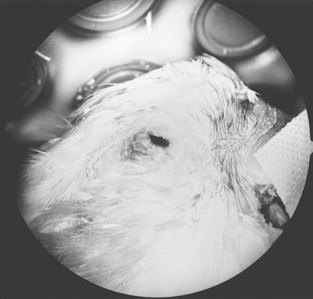Chapter 29 Diseases of the Eye and Ear
THE EYE
Abnormal Palpebral Fissures
Cryptophthalmos, the abnormal fusion of skin over the globe and orbit, is seen in cockatiels (Fig. 29-1). This fusion reduces the palpebral fissure in both length and width.

Figure 29-1 Abnormal palpebral fissure in a cockatiel.
(From Altman RB, Clubb SL, Dorrestein GM, Quesenberry KE: Avian medicine and surgery, Philadelphia, 1997, WB Saunders, by permission.)



